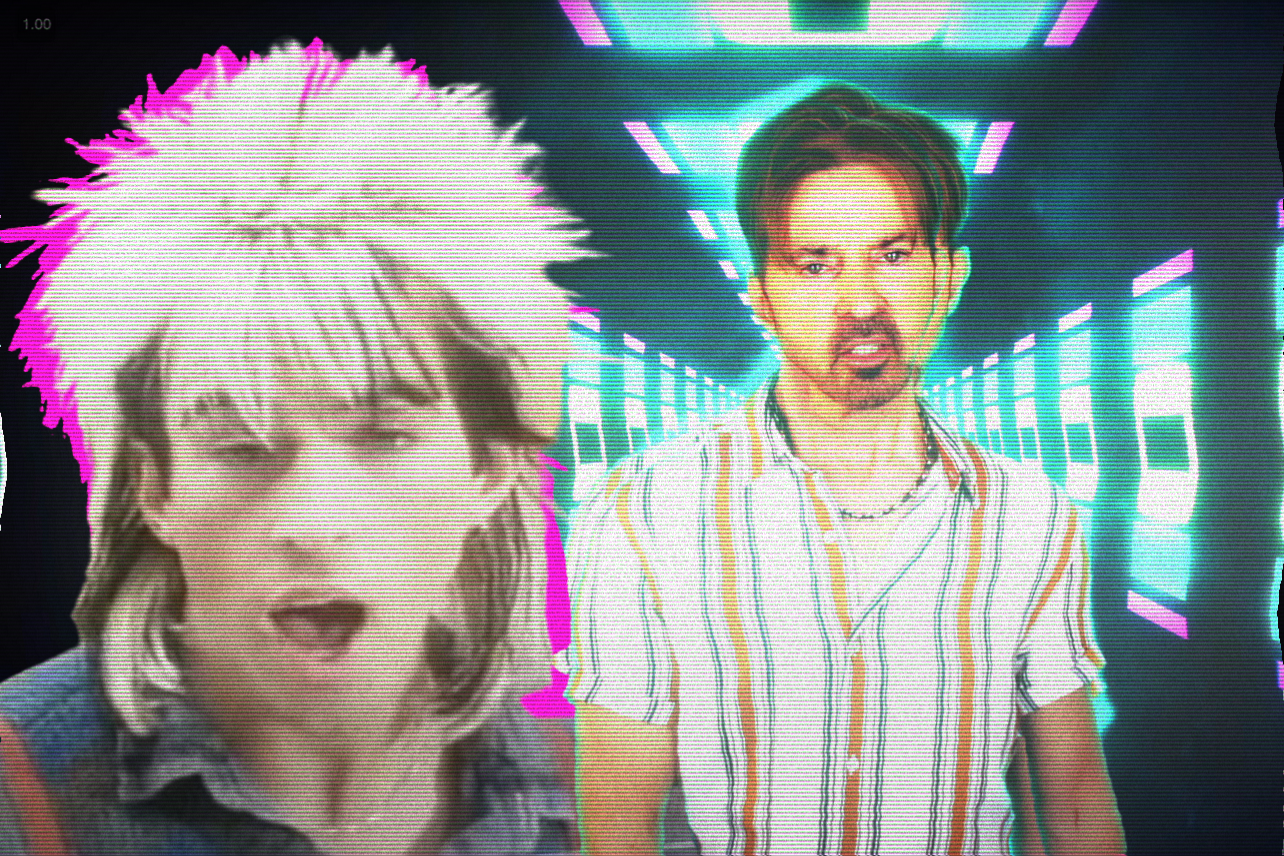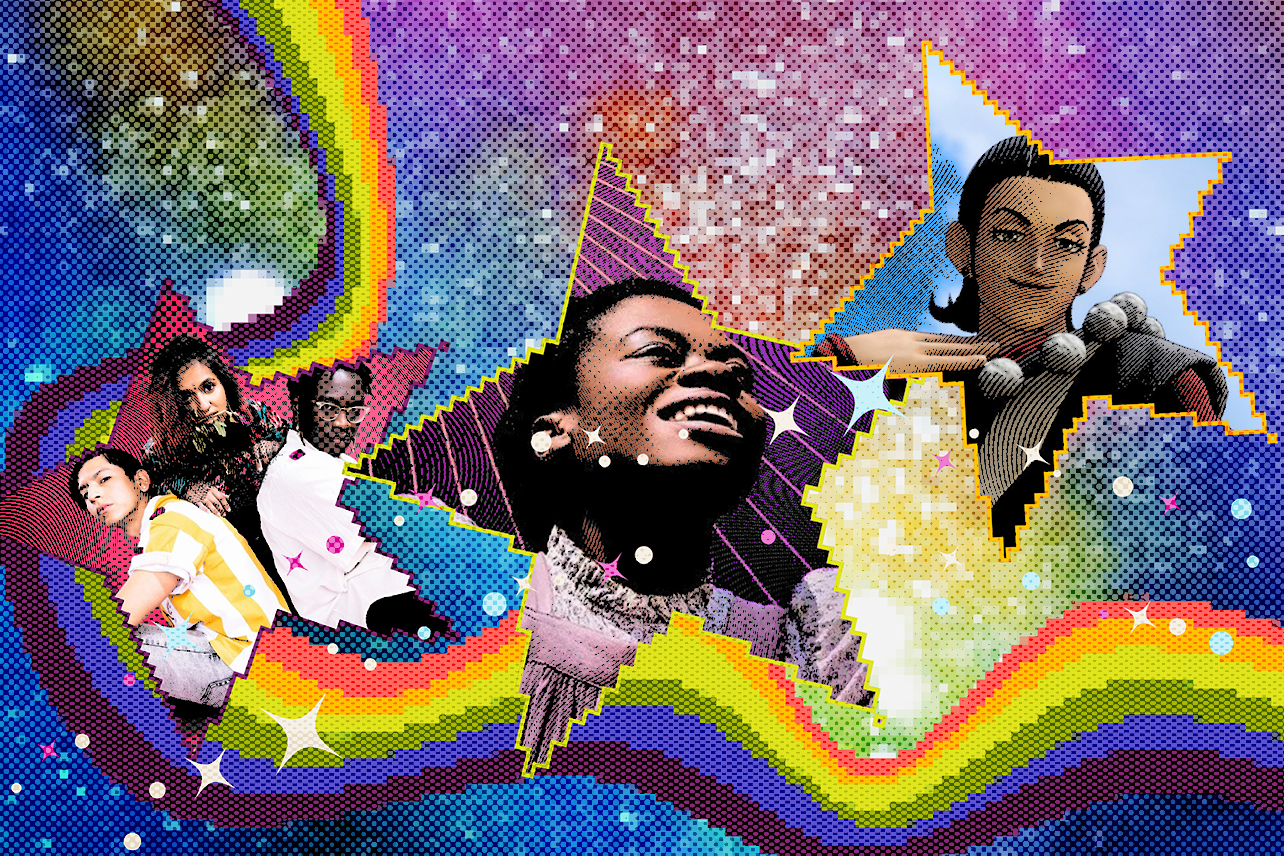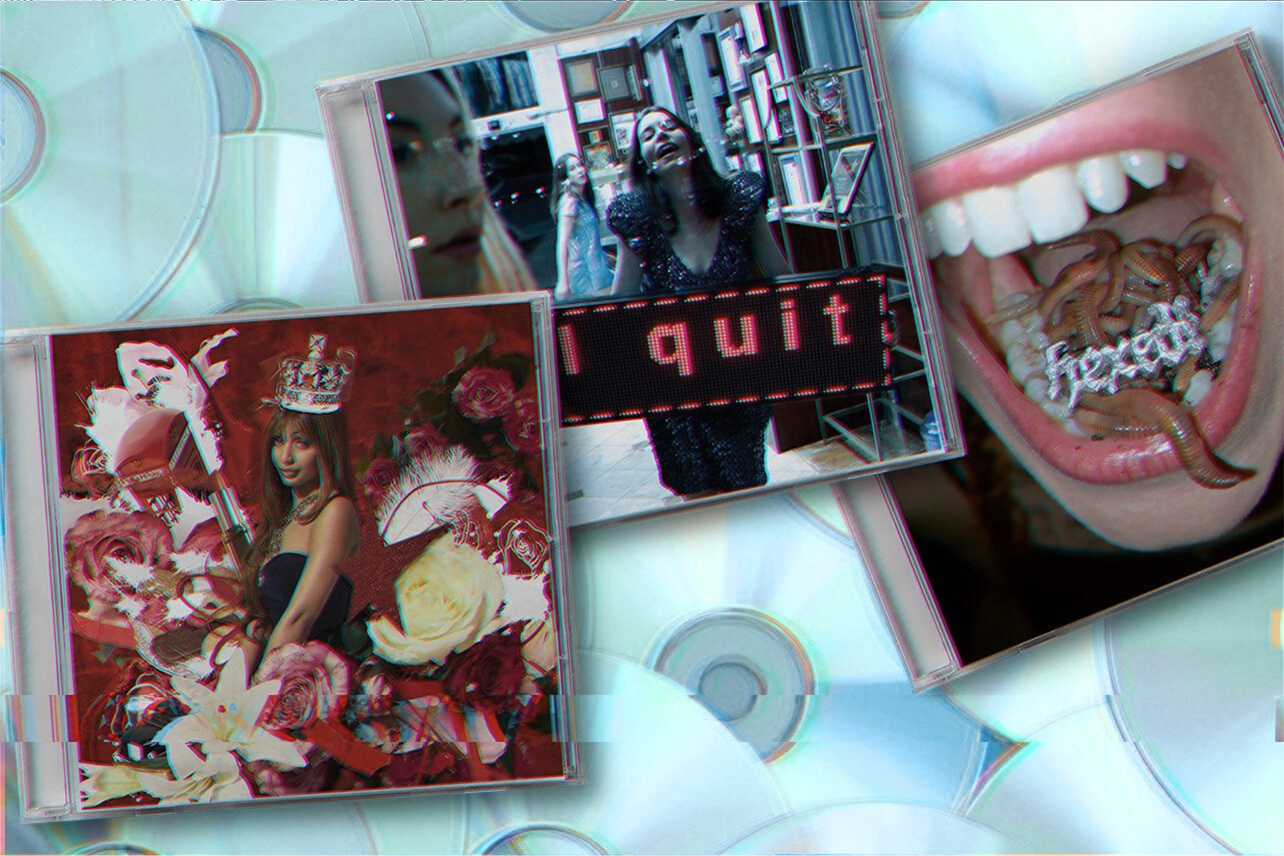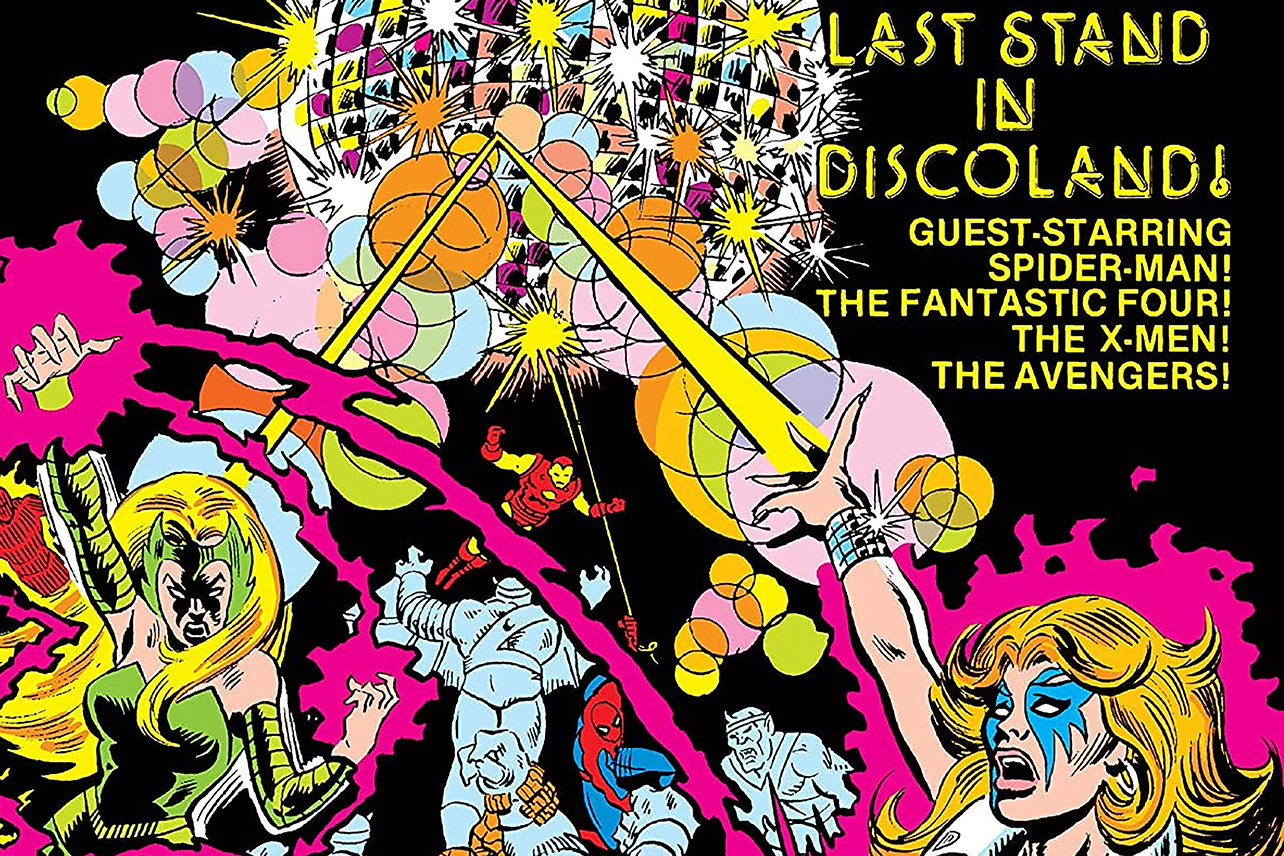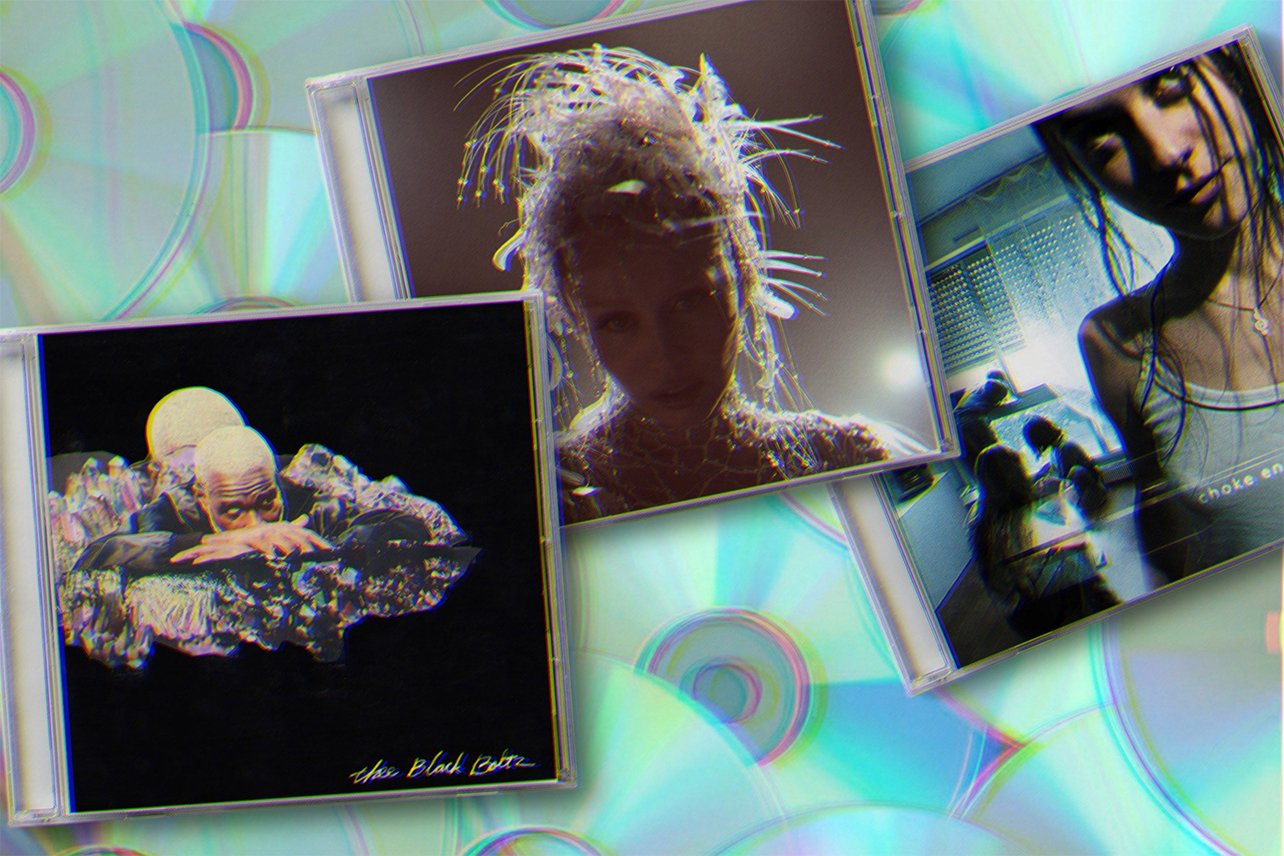When you hear the name "Limahl," it's fair to say that it's generally one of two songs that immediately leaps to mind: either "Too Shy," the big hit he had whilst fronting Kajagoogoo, or "The NeverEnding Story," his biggest solo hit. But just because those are possibly the only two Limahl songs you know doesn't mean that he hasn't done plenty more than that.
Indeed, Limahl has been releasing a number of one-off singles over the course of the past few years, and his latest is a cover of America's "A Horse with No Name," one which — although you probably can't immediately conceive of him singing this song — has been tweaked into an arrangement that works remarkably well with his voice. Truly, it now sounds like a Limahl song …whatever that means.
How one defines what a Limahl song sounds like is one of the topics that was discussed in Pop Heist's conversation with the former Kajagoogoo frontman, along with his time with the band that first made him famous, how he found himself teaming up with Giorgio Moroder, what led him to (briefly) appear in an Adam and the Ants video, and which of his solo singles he wishes had been a bigger hit.
Will Harris: How did you come to the decision to cover America's "A Horse with No Name"?
Limahl: Well, I've always loved it. I think as a songwriter myself, you come to realize that what makes you tick is your journey. Your journey through life, your inspirations, your rollercoaster, if you like, emotionally. And equally, somebody else's journey who's creative will influence them. So never in a million years could I have come up with Dewey Bunnell's song, because I've read about it. His father was moving around, and he was in a desert a lot when he was young. That's not an experience that I'm likely to have in the UK. [Laughs.] So respect to other creative minds, really, firstly, and embracing a great song. Yes, we all want to come up with the "Too Shys" and the "NeverEnding Stories," but that's why it's a formula. A hit song, that uniqueness that maybe sometimes you stumble upon when you're being creative. It can come from anywhere.
I will say that you've transformed it into a song that's a perfect match for your sensibilities. As I told [your publicist], I had no idea what I was going to get when I went into listening to it, but I really loved it.
That's good. That's a good reaction: you really love it. I like that. You're my first interview about this project, so you've got me fresh! And possibly slightly rusty, 'cause I haven't done any interviews in four years! [Laughs]
Another question about "A Horse with No Name." Is it a standalone single, or are you thinking in terms of doing an album of covers?
So this is how I feel. I just feel less is more. I'm certainly ... I'm not going to do an album of covers, so that's a "no." I'm one of those ... I'm, like, an "ex-name," if you like. I'm a standalone artist with no record deal. I'm doing what tens of thousands of ex-signed artists are doing, which is releasing tracks. I think it's a real time commitment to put an album together. And I'm 66 now, you know? I'm slowing down a little bit. I feel I've earned that right. So at the moment I've sort of said to myself, "Well, I'll do one track a year at least." Because I think the old album model ... I don't know if it's as relevant anymore, because everyone's creating playlists and streaming — including myself!
Well, the mere fact that it's something new ... I mean, I know the standard route for a lot of artists is to do updated versions of their old hits, but this is actually something new, and it's nice to hear.
Yeah! I know, completely. I think there are some really good precedents for cover versions that sometimes improve. Now, I'm not saying mine improves. It's a different interpretation. But ... [Hesitates.] I don't know if in America... Did you hear the Brand New Heavies' version of "Midnight at the Oasis" in the '90s?
I did. I'm very much an Anglophile.
Oh, okay! Well, to me, that was just mind-blowing, because the original by Maria Muldaur, who's kind of folky, almost a '60s vibe, Joni Mitchell or people of that ilk, and all of a sudden they come along and funk it up. [Laughs.] And they give it a groove! So I think if you're gonna do a cover version, if you can really bring something new to it, then it seems to validate it more. I do feel I've done that with this somewhat.
I agree. There's a compilation called '80s Re-Covered, and ABC does a version of Radiohead's "High and Dry" that sounds 100% like an ABC song. And I feel like you've done that with "A Horse with No Name," making it sound like a Limahl song.
Yeah, well, what is a Limahl song? I don't know! [Laughs.]
I'm not exactly sure either. But your voice sounds appropriate singing this interpretation of the song, I guess that's what I'm trying to say.
Is it Dewey Bunnell on the original version? I should know that, because I've done my research. I know where they recorded it, I know the story behind the song, I know that on their 1971 album that was released in Europe, "A Horse with No Name" wasn't actually on it. It wasn't on the album, and then the record company asked for four new songs, and they actually wrote "A Horse with No Name" when they were staying with a musician friend in ... I think it's Dorset in the UK. And then the songs were recorded at Morgan Studios in north London. So ... uh, yeah, I forgot what I was saying. [Laughs.]
Well, it sounds like a Limahl song, whatever a Limahl song sounds like.
The weird thing about my voice is ... I mean, with "Too Shy," the top note is an F-sharp. [Sings.] "Shy, shy!" It's up there somewhere. "The NeverEnding Story" is a semitone higher, so that's a G. So as soon as you hear me singing around that area, it's just my tone! It's just a Limahl tone. [Laughs.] And that's what people recognize!
I was doing some research before hopping on Zoom with you, and while I obviously don't trust anything 100% that I've read online, is it true that you're actually an extra in the video for "Stand and Deliver"?
It is true.
How did that come about?
I was working at the Embassy Club on Bond Street in London, I was a waiter / busboy, and the video director for Adam and the Ants, Mike Mansfield, his assistant was also a regular there. And one night he just said to me, "We're shooting a new Adam and the Ants video. We need some extras. You'll get 50 quid, and you'll have a fun day out." And I just thought that sounded so much fun. [Laughs.] I was, like, 19 or 20 at the time.
So a coach picked me up, and we drove from central London to Hatfield House, which is the house where Queen Elizabeth — the first, obviously — was kept captive by her sister Mary, who was then on the throne. So Hatfield House, this amazing old house with history, was where they shot the video. Now, the negative is, they picked me up at six in the morning, and we finished about 10:30 at night, so by the time I got home, it's, like, an 18-hour day. And it was a lot of filming and standing around — retakes and retakes — and when I saw the finished cut, I was absolutely gutted. Because, seriously, if you blink, you miss me. And that's the infamously brutal editing room floor, isn't it? [Laughs.]
It seems as though you started out with an eye on acting, but did you also have an interest in music from the beginning?
Well, I would put it the other way around. Music is really what drove me. I think what happened was, I got an agent. A girl I knew introduced me to a theatrical agent. I actually started in theater — I was singing in Godspell and Joseph and the Amazing Technicolor Dreamcoat — but occasionally they'd call you with other jobs. I had one line in one episode of a TV series called The Gentle Touch. I was ... not an extra, but kind of featured — but no speaking — in a shoe commercial. [Laughs.] Isn't that how Luther Vandross and Barry Manilow and others got started, doing music in commercials? And, I mean, you couldn't say no to your agent back then, because he or she wants you to make money to earn them their commission. And you're probably not doing anything else anyway. I didn't have a day job that I recall. I had a night job, so I could do the day stuff.
Before Kajagoogoo, I know you were in a band called Brooks, but I don't think you actually recorded anything with them, did you?
I got fired. So that's two bands I've been fired from. [Laughs.] So Brooks did actually go on to get signed by Polydor, and one of the members of Brooks went on to join Bucks Fizz. Brooks were not successful, even though they had a good manager and they had some push behind them. But I was supposed to learn some harmonies, and I went home to my parents' for a wedding. I went back up north. I'm from Manchester. I came back, I didn't know my harmonies, and they set an example of me, I guess. It was very early stages, really. But I think there is a Brooks video on YouTube, and you'll see Mike Nolan from Bucks Fizz. And I used to give Mike a lift home, or he'd give me a lift home, and I've always watched Mike's career. I mean, in Europe... Possibly not in America, but Bucks Fizz had, like, three #1's in the UK. And I always thought their productions were great. And one of the songwriters — and the producer — for Bucks Fizz, Andy Hill, also co-wrote for Celine Dion "Think Twice," which was #1 here for, like, nine weeks back in the day. [Laughs.]
So you then auditioned to be lead singer of Kajagoogoo ... or I guess they were called Art Nouveau at the time.
Yeah, all the members were there ... and they were Art Nouveau. They were a four-piece. The bass player met me at the train station in this little town about 50 miles north of London called Leighton Buzzard. And they were rehearsing in a greeting card factory that the drummer worked at. And the boss said, "You can use the factory floor after office hours — after six — to rehearse." So I went down and I met them, and I was offered the job straight away. They'd auditioned quite a few singers, and I'd auditioned a lot of musicians, trying to form my own band, so it was good timing, really.
I understand it was your connection that led Nick Rhodes of Duran Duran to work with the band.
Yeah, I met Nick down at the Embassy Club. Again at the Embassy Club! [Laughs.] I used to see Gary Numan down there, I saw Bananarama, Steve Strange from Visage ... Boy George even popped in a couple of times! And record companies would hold events there. I remember I was serving drinks to a private party on the balcony for a U.S. band who were having huge success at the time called Rose Royce. I think "Car Wash" had just absolutely exploded here.
With Nick working with the band, I presume that had a lot to do with getting the deal with EMI, but how much do you think he influenced the band's sound? Or was it pretty well established before he got there?
I think it was pretty established. But what Nick did bring with him was the Durans' producer, Colin Thurston. Let's not forget the late Colin Thurston! Colin was a real kind of ... He'd come through the school of engineering. He would know what outboard gear to hire. I remember he hired some amazing compressor, because that's what you did in those days. If a studio didn't have what you wanted, they would just hire it. But the compressor would just give this extra oomph to the bass drum, for example. So I think that was an important role, and I don't think that's something that Nick would've necessarily known. I think at the time Duran had only done one album with Colin. But of course Nick was great inspiration for all of us. We were Duran fans. And he was good with arrangements. Also, very important when you've got a five-person band with five personalities, you need someone at the top that can crack the whip. The captain of the ship, if you like. Because we've all heard the famous Troggs tape, right?
Oh, yes.
[Laughs.] And you don't want a situation like that! So even just as a guide, as a whip-cracker, it was important that Nick was there.
Do you have a favorite song on White Feathers that wasn't a single?
[Long pause.] i haven't played it in so long. Um ... I do like "Frayo." I mean, it's a bugger to sing, because I'm screaming at some of the notes. What else? The track "Kajagoogoo" is an instrumental, but when we did it live, there's a vocal. But I don't think it was ever released with the vocal. I've done it live myself with the vocal. So that's a strong track. And I think it's a perfect example of the musicianship, the talent, that I recognized when I went down to that birthday card factory. I just thought, "These guys have got something."
When you went your separate ways from the band — not by choice, as you noted — were you blindsided by it, or did you see it coming?
Totally blindsided, yeah. I mean, we'd just played to 40,000 people at a huge festival in Finland the day before, on a Sunday that weekend, and I got a phone call on that Monday morning. Yeah, I was completely shocked. And in the VH-1 episode of Bands Reunited, the Kajagoogoo episode, only the drummer said on camera, "We fired the wrong guy." [Laughs.] "We should've fired the manager!" I don't hear much from Stuart [Neale] and Steve [Askew], keyboards and guitar, and Nick [Beggs], the bass player, has certainly never admitted... [Hesitates.] I don't think he's admitted publicly — or certainly not to me — that they made a mistake. Everybody else says they made a mistake. I'm not saying that. That's what I see on social media, blah blah blah. I just regret not having the opportunity to be creative as that group of minds and that group of energy, that it was cut so short so abruptly. So there you go! Bands, like marriages, break up! In a marriage, you can't get two people to agree, so try five!
I should say that my wife and daughter and I went to see Howard Jones a couple of years ago, and Nick was playing bass with him, and my daughter — having half paid attention to what I'd said earlier — said, "Now, is he the one who was in Kangaroo?" I said, "I think you mean Kajagoogoo ... and, yes, he is."
[Laughs.] And I believe he's out on tour with him at the moment ... and I believe that Howard is singing "Too Shy," and obviously mentioning Nick. I'm not quite sure how they're doing it live. Is it just acoustic bass and keyboard? I don't know. But I'm glad that Nick is kind of ... [Hesitates.] Because for years he was a little bit dismissive. "Oh, that little band I was in, Kajagoogoo ... " But you just can't deny the impact that it had.
Well, they played it when we saw him, and the crowd went absolutely insane.
Yeah, I'm sure!
And I think Howard did you justice.
Oh, good! Well, I'm a fan of Howard Jones. He's great!
As far as embarking on your solo career, "The NeverEnding Story" was certainly a nice happy thing to come about, but ... how did it come about?
So my first solo single with EMI was a song called "Only for Love," and EMI Records suggested I go to the Tokyo Musical Festival in Japan. I agreed. It's a massive, massive event at the Budokan Hall, and they were quoting something like 10 million TV viewing audience, great promotion, blah blah blah. So off I toodled to Tokyo. First time in Japan, very exciting. And it's kind of ... songs that are judged. It's not Eurovision, but it is a competition. And I was there with Laura Branigan, who'd just had a big hit with "Gloria." And if you look at the program, the physical program for the Tokyo Musical Festival, all the biggest stars have been there. Diana Ross and Dionne Warwick and Lionel Richie and many others. So as far as I was concerned, I was in good company.
But Giorgio Moroder was on the panel that year, and my manager — an Irish guy called Billy Gaff who had previously worked with Rod Stewart and who was a real entrepreneur, a real energy — I think he went to dinner with Giorgio, and I've no doubt that they exchanged some great stories. I was very young at the time — 24 — and I'm sure that Billy, in his inimitable style, would've said, "Limahl is the best thing since sliced bread, or he's gonna be!" And when I got back to the UK, we got the call to try my voice on "The NeverEnding Story." I flew to Munich a few days later, and I was very naughty: I was up late the night before, I was smoking and drinking, and I'd had four hours sleep. So when I got to Munich, I couldn't sing, really. The song's quite high. I was not fazed. I mean, I would be now, but I was, like, "Who's this Giorgio Moroder? I'm a big pop star!" [Laughs.] But Giorgio was very cool. Although he must've been thinking, "Oh, I'm not sure this is gonna work out ... "
So he goes, "Hey, Lim, don't worry! We'll have some wine, have some food, and we try again a little bit later!" He hasn't lost his Italian accent ... or at least he hadn't then. [Laughs.] So that's exactly what happened: at about eight o'clock in the evening, we tried again, and everything was working. And, of course, recovery at 24 years old from a hangover and smoking is much quicker! But I didn't find out for a couple of days that he was gonna use it. And then I got the call: "Yeah, he likes the vocal, he's gonna use it." And then it goes into the machinery of contracts and EMI Records and blah blah blah ...
Well, I've seen the Solid Gold clip of you and Beth Andersen — the female vocalist on the song — performing together for the first time ever. It's crazy that you'd never actually met before that.
[When Limahl did the video for the song, they had someone else lip-synch the female vocals, since Andersen was American and wasn't readily available to fly over.]
Yeah, I think there are some famous duets like that, where the singers never actually met. And that probably happens even more nowadays, since it's so easy to just send files. But, yeah, when I recorded my voice in Munich, there was no female voice on there. So I never met Beth Andersen. I wasn't aware. And the record company ... I think Beth was basically doing a lot of session work for Giorgio when he was in Los Angeles. But she sounds great on that recording! Do you know her?
No, I just used to write posts for Rhino Records' website, and I wrote one about "NeverEnding Story" and discovered that anecdote and thought it was interesting.
Oh, okay! Yeah, it was great to meet her. I've got a picture somewhere on my social media where I was performing it on American Bandstand with her. And, of course, meeting Dick Clark, too ... What a legend!
Lastly, do you have a favorite solo single that wasn't the hit that you'd hoped it would be?
Well, I'm gonna go recent on that one. In 2020, I released a track called "Still in Love," and ... Yeah, I'm really proud of that track. I love the lyric, and I like the work that the producer — a German producer — did. And I think it aches as a song. It's a real kind of heartache song that I think a lot of people will relate to. And I'm still hoping that one day it may get a chance to shine. I'm never giving up! Because you never know. I mean, there are so many songs that you find out about ... For example, I didn't even know that "Bette Davis Eyes" was a cover version. "Tainted Love," the song had to wait 15 years before it became successful with Soft Cell. So there's tons of stories like that. I'm sure you know as a music journalist. So I'm still keeping my fingers crossed for "Still in Love"!
